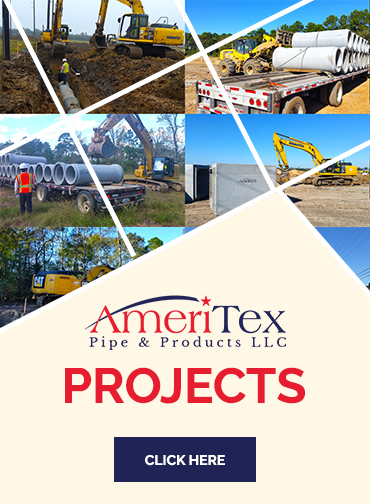How to Install Concrete Culvert Pipe
Posted on June 13, 2022
Learning how to install concrete culvert pipe can seem like a challenging task, but it doesn’t have to be. By following a few simple steps, you can have your concrete culvert pipe installed.
Concrete culvert pipes are the first step in setting up durable storm sewer systems. Irrigation projects and sanitation systems are also set on concrete culvert pipes. Such projects would not be achieved without the use of American concrete pipes.
An Overview of Concrete Culvert Pipes
Reinforced concrete pipes have an inherent strength, and because of that strength, concrete culverts offer high-quality, robust, and durable drainage systems. In fact, concrete pipes are far better than high-density polyethylene plastic pipes.
Concrete has been in use for many years, and most builders prefer concrete because of its strength and durability. Concrete has a lifespan of about 100 years.
Here’s how to install concrete culvert pipes. Keep in mind that the steps to install concrete culvert pipe outlined here are only a guide. They should not supersede the project specifications and installation manual for concrete pipe.
Installing Concrete Culvert Pipes
Handling of concrete culvert pipe
Reinforced concrete pipes are designed with a wide, flared, end section. This section is known as the bell, and a narrow end, typically inserted into the bell, is commonly referred to as the spigot. These ends should be carefully handled before the concrete culvert pipe installation.
Excavation for Reinforced Concrete Culvert Pipe
During excavation, consider the trench width and depth, and remember that trenches for installing concrete pipes should be sloped (graded). Concrete culvert trenches should be wide enough for the pipes, but they should also have sufficient room for adjustments and some basic operations. Safety must always be a top priority.
The diameter of your installation pipes determines the width of the excavation. This should be fairly easy since dimensions are included in the concrete pipe and box culvert installation manual.
Use precast concrete to build a strong foundation, and take extra precautions when soil stability is uncertain. Large concrete pipe installations or deep fills need an engineer to analyze the soil. Once the excavation is complete, the next step is to prepare a bedding layer.
- Bedding should consist of crushed stones or a mixture of sand and gravel.
- It should be completely level and free of debris.
- The materials should be moistened and compacted evenly.
The trench should have a uniform layer of bedding at all points. Remember not to place the culvert pipes on their bells on the bedding layer to avoid damage.
Preparation for the joining surfaces for the reinforced concrete pipes
Here’s how to prepare the joining surfaces:
- When installing concrete culvert pipe, clean each section and remove dirt from the bell.
- Lubricate and clean the pipe using a brush to prevent the gasket from rolling away.
- Clean and lubricate the spigot of the other adjoining pipe to ensure a good seal and proper homing of the joint.
Installation of RCP
The basic process of installing RCP (reinforced concrete pipe) is as follows:
- Two workers manage the pipes
- A crane or backhoe lowers the large pipe
- Workers guide the pipe into place
- The tongue of the new pipe is inserted at the end of the installed pipe
- The new section is manipulated with a crowbar or pipe pullers to ensure it is seated and well-aligned
Backfill for RCP
The final step in concrete pipe and box culvert installation is backfill. After installing the concrete culvert pipes, the soil is put back into the foundation. The backfill material is placed on all sides of the pipe. It should not be bulldozed or dropped directly. The backfilled and compacted trench is then graded according to project specifications.
How to Get Started with AmeriTex Pipe & Products
If you need a reinforced concrete pipe, visit AmeriTex Pipe & Products. We offer a large selection of concrete culvert pipes and a team to help you choose the correct pipe product. Contact us today to learn how we can help with your project.
Need to learn more about concrete pipes? Here are some resources to get you started:


